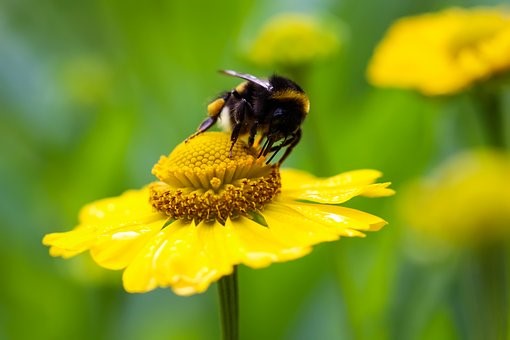Basic Pollination
By Elizabeth Cornell Fake, Fairfax Master Gardener
 “Why do I have vegetable blossoms and no vegetables?” This was a frequent question for us Master Gardeners at last summer’s plant clinics. After our usual diagnostic questions about sunlight, soil and water, we then asked, “How many bees do you see?” When the answer was “few” or “none,” we suspected that the problem was pollination failure. Pollination accounts for one in every three bites of food we eat, so pollinator failure is an important concern for gardeners who grow fruits and vegetables for food.
“Why do I have vegetable blossoms and no vegetables?” This was a frequent question for us Master Gardeners at last summer’s plant clinics. After our usual diagnostic questions about sunlight, soil and water, we then asked, “How many bees do you see?” When the answer was “few” or “none,” we suspected that the problem was pollination failure. Pollination accounts for one in every three bites of food we eat, so pollinator failure is an important concern for gardeners who grow fruits and vegetables for food.
Honeybees are the first pollinators to come to mind, but pollinators also include native bees, flies, birds, bats, butterflies, moths, beetles and even some mammals. Of all pollinators, bees are the most involved in pollinating vegetables and other edible plants.
Pollinators need our help, as some species of butterflies and bees are now in danger of extinction. There have been many theories about why this is happening, but the most common explanations are habitat loss, pests, pathogens, pesticides, invasive plants, pollution and the loss of suitable nesting places. We can help the pollinators by adopting cultivation practices that attract bees and provide the supportive habitats other pollinators need to survive.
A pamphlet from the USDA U.S. Forest Service, “Attracting Pollinators to Your Garden Using Native Plants,” offers some ways to start providing a more hospitable environment for pollinators:
- Grow more flowers, trees, shrubs and herbaceous plants, and include a variety of shapes, sizes and colors. Variety encourages a wide range of pollinators.
- Design your garden around native species that are hardy and best adapted for the environment. Think of native plants as “comfort food” for pollinators, who prefer a standard menu of old favorites they can depend on instead of a diet of exotic fare they do not recognize or like. Cultivars and hybrids usually do not produce nectar or pollen to feed pollinators.
- Plant big clumps of the same kind of flower in sunny locations to make it efficient for pollinators to forage for food.
- Plan to include a variety of plants in your garden so there will be something in bloom during each end of the growing season. Willow, mayapple and violets attract pollinators in the early spring, while asters, Joe-Pye weed and goldenrods feed pollinators in the fall.
- Allow some disorder in your garden. Pollinators thrive under clumps of unruly grass and debris. Encourage the growth of acceptable weeds whenever possible to provide supportive habitats for pollinators of all kinds. Pollinators thrive on milkweed, goldenrod, clover and dandelions, to mention only a few.
- Go easy on the weed cloth or mulch. Seventy percent of bee species live underground and can get trapped under a heavy mulch cover.
- Try to avoid the use of pesticides and herbicides by using an integrated pest management (IPM) approach whenever possible. Volunteers at your local plant clinic can provide more specifics on IPM.
- Explore the Million Pollinator Garden Challenge, sponsored by the National Pollinator Garden Network, linked below.
Resources
National Pollinator Garden Network
Attracting Pollinators to Your Garden Using Native Plants, U.S. Forest Service